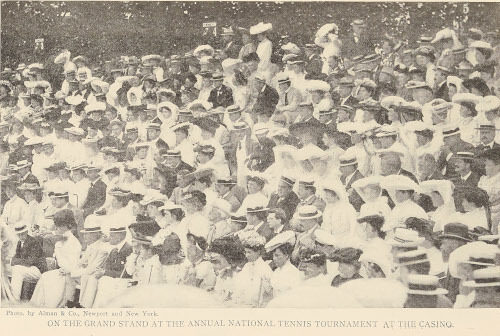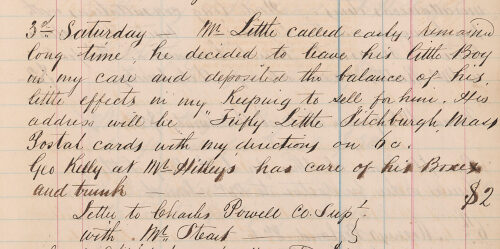Gilded, not Golden: Perspectives from the Gilded Age
This week marks the publication of The Gilded Age and Progressive Era, a resource which brings together varied primary source material from eight archives to shed light on this transformative period in American history.
The period was one of contrasts: the Gilded Age was characterised by opulence, wealth and rapid economic growth; the Progressive Era by political reform and social activism. The digitised primary sources allow users to examine the contrasts and contradictions central to the decades covered by the resource – the experiences of the wealthy against those of the very poor, the lives of prosperous industrialists compared with struggling labourers, political corruption beside growing philanthropic movements and entrenched racism causing a stark contrast in the experiences of black and white communities.
The Newport Casino Bulletins provide an insight into the archetypal Gilded Age experience of the wealthy in Newport, Rhode Island – a city which had become the choice resort of many of the nation’s wealthiest families. The Casino was commissioned in 1880 as a social and recreational club and offered pastimes including archery, dancing and horse shows and facilities such as shops, a ballroom and a theatre. It was also the site of the US National Lawn Tennis Association championships until 1914.

Crowd at the National Tennis Tournament, 1905 © Newport Historical Society. Further reproduction is prohibited without permission.
The bulletins include photographs of the Casino and other Newport landmarks, advertisements for local services and programmes of events. They capture the lifestyle of an elite, exclusive social group in the early twentieth century or, as Nancy Unger describes in her video interview, “the wealthy at play”.
Less than 200 miles from the beachfront “cottages” at Newport, experiences of the Gilded Age were far less luxurious. William O’Gorman’s daybooks document his work as Overseer of the Poor in Newtown (now Elmhurst), Queen’s, New York. His role was to administer poor relief within the district, and his records provide daily notes on his interactions with a diverse impoverished community – he worked with formerly enslaved people, European immigrants, soldiers, orphans and the physically and mentally ill.

Account of Mr Little, 1874 © New-York Historical Society. Further reproduction is prohibited without permission.
The daybooks contain a wealth of individual narratives from across the district – an entry from October 1874 reads “Mr Little called early, remained a long time, he decided to leave his little Boy in my care and deposited the balance of his little effects in my keeping to sell for him”; others provide broader commentary on the district’s changing demographic. In 1876 he wrote, “the colored people are flocking in crowds. This is a bad sign […] the town is one vast poor house”. O'Gorman's accounts shed light on the significant difficulties facing ethnic minorities in the area, with economic deprivation, poverty and entrenched racism rendering urban areas such as Newtown especially hostile to its growing Black community.
These two series of documents demonstrate some of the contrasts and contradictions inherent to the period. With the inclusion of Handwritten Text and Optical Character Recognition, all digitised sources in the resource are full-text searchable – functionality which opens up great opportunities for exploring and understanding a range of experiences of the Gilded Age and Progressive Era.
For more information about The Gilded Age and Progressive Era, including pricing, please request a demo.
Recent posts

The blog highlights American Committee on Africa, module II's rich documentation of anti-apartheid activism, focusing on the National Peace Accord, global solidarity, and student-led divestment campaigns. It explores the pivotal role of universities, protests, and public education in pressuring institutions to divest from apartheid, shaping global attitudes toward social justice and reform.

This blog examines how primary sources can be used to trace the impact of young voices on society, particularly during pivotal voting reforms in the UK and the US. Explore materials that reveal insights into youth activism, intergenerational gaps, and societal perceptions, highlighting their interdisciplinary value for studying youth culture, activism, and girlhood across history.
